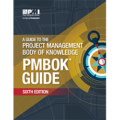
Resource management is the effective utilization of an organization’s resources to accomplish a given task or project.
In project management, resource management is one of the most important skills of a project manager. Because a project has a fixed (usually) schedule and budget, the utilization of the project’s resources can play an integral role in the success of the project.
Resource management consists of five parts:
- Resource planning
- Resource estimating
- Resource allocation
- Resource leveling
- Resource utilization
Resource Planning
All projects require resources. As a minimum, one person is required to perform a simple task. But most projects require many resources that each come with different attributes, that is, availability, reliability, purchasing lead times, and so on. Many resources even rely on each other, for example, the fence posts are not required until the holes are dug.
In professional project management, a project is divided into its constituent tasks and managed on the task, rather than the project, level. In the planning stage, each task is assigned the resources necessary to complete it. For example,
| 20 – Design Website | ||
|---|---|---|
| Type | Required Usage | Total |
| Jon | 40 hrs @ $75/hr | $3,000 |
| Bob | 25 hrs @ $50/hr | $1,250 |
| Office Expenses | 5% | $212.50 |
| Administration | 3% | $127.50 |
| TOTAL | $4,590 | |
Project resources are one of the following 6 things:
- Labor is human resources. People need to be given work environments where they don’t conflict with their coworkers or superiors. Most people also have a need to obtain additional knowledge, training, or skills that they didn’t have before, or they will lose motivation.
- Materials are the physical resources that become part of the finished product. This can range from building materials to databases to chemical additives. They must be purchased and received in a timely manner.
- Tools and equipment are used to produce the product but are returned back to their respective owners upon project completion. They need to be kept in satisfactory condition, minus acceptable wear and tear.
- Facilities are the premises that the project performs its work on. The property and buildings must be kept in reasonable condition for its owner upon completion of the project.
- Subcontractors often perform large parts of the work. They wish to be paid on time and treated fairly, as well as to leave the project with a better chance at the next one (a reference).
- Other resources like project financing costs, insurance, bonding, legal services, documents, administration (shared services like CEO salaries), contingencies, etc.
Resource Allocation
Resource allocation is the process of assigning resources to tasks. As per standard project management methodology, each task is assigned:
- Schedule (minimum start and end dates)
- Budget
- Resources
This results in a work breakdown structure (WBS) with those three items assigned to each task, like this:
| ID | Task | Start | End | Budget | Resources |
|---|---|---|---|---|---|
| 100 | Build Database | June 1 | June 10 | $1,000 | Bob, Server, Office |
| 200 | Design Website | June 8 | June 31 | $9,000 | Bob, Jon, Server, Office, Kanban board |
Resource Estimating
To estimate the required resource usage for each task, several methods are employed, in this order:
- Expert judgment
If you have a subject matter expert available you have the best source of information for an estimate. For example,A book purchased at the hardware store suggests that fencepost holes should require about 1 hour per hole, therefore this project will require 20 hours for digging the holes. - Analogous Estimating
The estimate is based on a previous project. For example,Digging holes for the fenceposts will require 25 hours because it required 20 hours at the previous project. - Parametric Estimating
The estimate is based on known unit rates based on many projects. For example,The local construction association estimates that fencepost holes require 1.5 hours per hole, therefore this project will require 25 hours for digging the holes.
Resource Leveling
Generally speaking, project schedules are not determined with the efficient use of resources in mind. The start and end dates of each task are determined based on full availability of the resources. From the example above,
| ID | Task | Start | End | Budget | Resources |
|---|---|---|---|---|---|
| 200 | Design Website | June 8 | June 31 | $9,000 | Bob, Jon, Server, Office, Kanban board |
Maybe this schedule is achievable between those dates and that budget. But it’s a common scenario that Bob’s services are required on another task at the same time. In this case:
| ID | Task | Start | End | Budget | Resources |
|---|---|---|---|---|---|
| 100 | Build Database | June 1 | June 10 | $1,000 | Bob, Server, Office |
Potentially, during the overlap period of June 8 – 10 Bob is working on both tasks. Thus, in order to achieve the overall project schedule Bob might be working overtime one day and be underutilized the next. As a result, Bob’s overtime pay will drive the project over budget.
This is solved with a process called resource leveling. This means the project resources are inspected and the project budget and schedule are adjusted to smoothen (level) the resource utilization. The wild swings in resource usage are softened.
Resource Utilization
 It is common on most projects to ensure the resources are present and available during the planning phase, only to have them underutilized and consuming project costs as the project team thinks about other things during the execution phase. This is inefficient and suggests that resource management should be a higher priority.
It is common on most projects to ensure the resources are present and available during the planning phase, only to have them underutilized and consuming project costs as the project team thinks about other things during the execution phase. This is inefficient and suggests that resource management should be a higher priority.
The utilization rate of project resources is a very basic way of tracking resource usage:
Utilization Rate = Billable Time / Available Time
It is used extensively in professional services industries like consulting, architecture, or engineering, where people’s time is the primary selling unit, but it should be used on all resources. If an engineer has spent 30 hours on project time out of 40 hours total, their weekly utilization rate is:
Utilization Rate = 30 hrs / 40 hrs = 75%
Very simple, really. But that’s just the calculation. The secret to project success during the execution phase is to maximize resource utilization.
The following five strategies are helpful to maximize resource utilization:
- Share between projects
If a resource can be used on multiple projects, their cost can be shared as well as their utilization rate can be increased. - Track the Utilization Rate
On a regular basis, the utilization rate for each resource should be calculated and well known to the project manager. - Adjust the schedule
Perform resource leveling regularly, that is, adjust the project schedule to eliminate the swings in resource usage. - Invest in resources
Upgrading a resource’s attribute like speed, strength, or capability can make a difference to a project’s success. This includes training for the project team.






